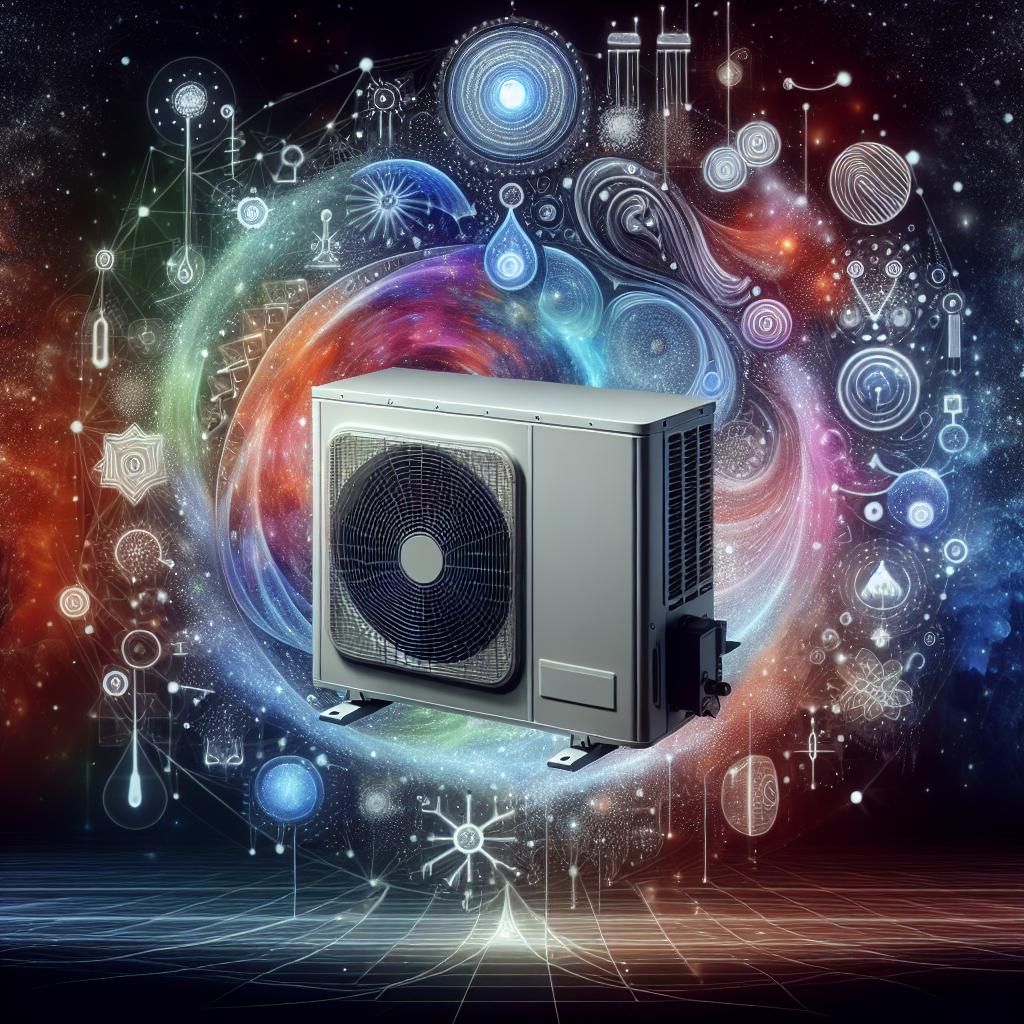In the realm of modern climate control, the quest for efficient and adaptable heating and cooling solutions has never been more pressing, especially as buildings grow larger and more complex. Enter the mini-split HVAC system—a compact, versatile contender that has captured the attention of homeowners and commercial property managers alike. As we delve into the capabilities of these innovative units, a crucial question arises: Can mini-split HVAC systems effectively service a large building? This article aims to explore the practicality, advantages, and limitations of using mini-split systems in expansive spaces, shedding light on a topic that blends technological advancement with the intricacies of architectural design. Join us as we navigate the nuances of climate control in large buildings, uncovering whether mini-splits can rise to the challenge or if they are best reserved for smaller, more intimate settings.
Evaluating the Efficiency of Mini Split Systems in Large Spaces
When assessing the performance of mini split systems in expansive areas, it’s essential to consider several critical factors that may impact overall efficiency. Mini splits offer versatility and the ability to create zoned climate control, allowing for customized comfort across large spaces. However, proper sizing and placement are crucial. Employing units that match the heating and cooling demands of the area ensures optimal performance. Additionally, insulation quality and layout play significant roles in unifying temperature distribution throughout the building.
To further understand their effectiveness, businesses often evaluate their options against traditional HVAC systems. Here’s a brief comparison:
| Features | Mini Split Systems | Traditional HVAC Systems |
|---|---|---|
| Installation Flexibility | High | Medium |
| Energy Efficiency | High | Medium |
| Noise Levels | Low | Medium to High |
| Initial Cost | Medium | Low |
In large buildings, these systems can be strategically positioned to maximize their benefits. Regular maintenance is key to sustaining their efficiency, as is ensuring that debris and obstructions do not hinder airflow. Adopting the right approach can elevate the performance of mini splits, making them an effective solution for heating and cooling in sizable settings.

Key Considerations for Integrating Mini Split HVAC in Commercial Buildings
Integrating mini split HVAC systems into commercial buildings offers a range of benefits, but there are essential factors to consider before making the leap. System capacity is crucial; the total heating and cooling load of the space must align with the capabilities of the mini split units. This requires an accurate assessment that takes into account the building’s size, usage patterns, and occupancy rates. Additionally, zoning capabilities provided by mini splits can enhance energy efficiency by allowing specific areas to be controlled individually, which can lead to substantial energy savings and improved comfort for occupants.
Another important consideration is installation and maintenance. Mini split systems often require professional installation to ensure optimal performance and compliance with local building codes. Planning for adequate space for outdoor condensers is also vital; these units can release heat and require airflow. Furthermore, incorporating a regular maintenance schedule can extend the lifespan of the system and prevent costly repairs. Here’s a quick overview of the pros and cons associated with mini split HVAC systems:
| Advantages | Disadvantages |
|---|---|
| Energy efficiency | Higher initial cost |
| Flexible zoning options | Requires regular maintenance |
| Quiet operation | Visual impact of indoor units |

Balancing Cost and Performance: Is Mini Split Right for Your Facility?
When evaluating mini split systems for larger buildings, it’s essential to consider both initial investment cost and long-term operational efficiency. Unlike traditional HVAC systems, mini splits offer advantages such as zoning capabilities, allowing for tailored heating and cooling based on different areas. This can lead to significant savings in energy costs, especially if only specific sections of the building require climate control. However, the upfront costs can be higher due to the need for multiple indoor units, so a thorough cost-benefit analysis is crucial.
To better understand how mini splits could fit into your facility’s framework, consider the following factors:
- Energy Efficiency: Many mini splits have high SEER (Seasonal Energy Efficiency Ratio) ratings, contributing to lower utility bills.
- Installation Flexibility: They are easier to install in spaces where ductwork is impractical or costly.
- Individual Control: Different rooms can be set to different temperatures, enhancing comfort for occupants.
Here’s a simple comparison table of potential benefits:
| Feature | Mini Split Systems | Traditional Systems |
|---|---|---|
| Initial Cost | Higher for multiple units | Lower for single unit |
| Energy Efficiency | High SEER ratings | Varies widely |
| Comfort Control | Zone cooling/heating | Single temperature setting |
Ultimately, the decision to implement mini splits in a large facility hinges on evaluating these factors alongside your specific operational needs. By carefully balancing the capital investment with the performance benefits, organizations can make informed decisions that enhance comfort while remaining mindful of the budget.

Best Practices for Installation and Maintenance in Larger Applications
When installing mini-split HVAC systems in larger applications, several best practices can enhance performance and reliability. First, it’s crucial to conduct a thorough load calculation to determine the specific cooling and heating requirements of the space. This ensures that the units selected are appropriately sized for the area, minimizing energy consumption while maximizing comfort. Additionally, strategic placement of indoor and outdoor units can significantly impact system efficiency. Consider factors such as airflow, potential obstructions, and aesthetic preferences. Utilizing appropriate mounting brackets and hardware will also ensure sturdiness and ease of access for future maintenance.
Regular maintenance is essential for keeping mini-split systems running efficiently within larger buildings. Establish a routine schedule that includes the following key tasks:
- Cleaning or replacing air filters at least every 1-3 months to maintain airflow and indoor air quality.
- Checking refrigerant levels and inspecting for leaks to prevent inefficiency.
- Cleaning condenser and evaporator coils annually to sustain optimal heat exchange.
- Scheduling professional inspections to ensure the entire system is functioning correctly and to address minor issues before they escalate.
Q&A
Q&A: Can You Use Mini Split HVAC in a Large Building?
Q1: What exactly is a mini split HVAC system?
A1: A mini split HVAC system, often referred to as a ductless system, consists of an outdoor compressor unit and one or more indoor air-handling units. These systems offer localized heating and cooling, allowing you to regulate the temperature in individual rooms or zones without the need for extensive ductwork.
Q2: Can mini splits effectively heat or cool a large building?
A2: While mini splits can be installed in large buildings, their effectiveness largely depends on the building’s layout, size, and insulation. To accommodate a large area, multiple indoor units might be needed, strategically placed to ensure even temperature distribution throughout the space.
Q3: What are the advantages of using mini splits in large buildings?
A3: Mini split systems provide several benefits, including energy efficiency, zoning capabilities, and flexibility in installation. Since they don’t require ductwork, they can be a good option for buildings that don’t have existing ducts or where duct installation isn’t feasible. Plus, their ability to let you control the temperature of each zone individually can lead to lower energy costs.
Q4: Are there any disadvantages to using mini splits in large buildings?
A4: Yes, there are some potential drawbacks. The initial installation cost can be higher due to the need for multiple indoor units. Additionally, depending on the building’s design, you may face challenges in achieving consistent airflow and temperature balance, which could affect comfort levels in different areas.
Q5: How do I determine if mini splits are the right choice for my large building?
A5: Assessing your building’s needs is crucial. Consider factors such as total square footage, insulation quality, and occupancy patterns. Consulting with a professional HVAC technician can help you calculate the heating and cooling load needed for each room, helping determine how many mini splits would provide optimal comfort.
Q6: Are there any alternatives to mini splits for cooling large buildings?
A6: Certainly! Alternatives include traditional centralized HVAC systems with ductwork and other options such as packaged rooftop units, chilled beams, or even hybrid systems that combine different technologies for efficiency. The best choice depends on your specific building and budgetary constraints.
Q7: What about maintenance? Do mini splits require special care?
A7: Mini splits do require routine maintenance to keep them running smoothly and efficiently. This includes regular cleaning of filters, checking refrigerant levels, and scheduling annual professional inspections. Regular upkeep ensures the longevity of your system and helps avoid costly repairs down the line.
Q8: are mini splits a viable option for larger buildings?
A8: Mini split HVAC systems can certainly be a viable option for larger buildings if planned and installed correctly. By carefully evaluating your building’s specific needs and working with HVAC professionals, you can determine if this flexible system can comfortably cool and heat your larger spaces effectively.
Insights and Conclusions
while mini-split HVAC systems offer flexibility and efficiency, their application in large buildings requires careful consideration. They can provide targeted comfort and energy savings when deployed strategically, but challenges such as installation complexity, capacity limitations, and integration with existing systems must be addressed. Ultimately, the decision to use mini-splits in a large building hinges on a balanced evaluation of the building’s specific needs, budget, and long-term energy goals. As the landscape of HVAC solutions continues to evolve, staying informed and adaptable will ensure that you achieve optimal comfort and efficiency, no matter the size of your space. Whether you’re a building manager, an architect, or a curious homeowner, the possibilities are vast—and the right choice is within your reach.

